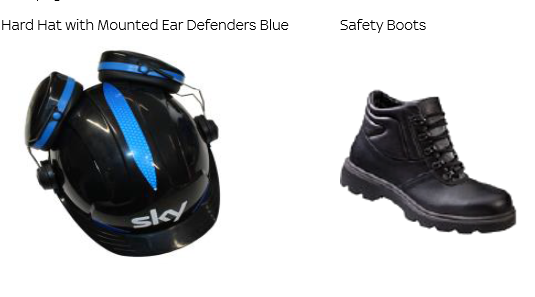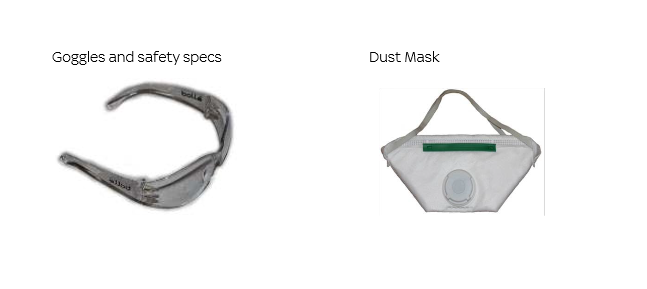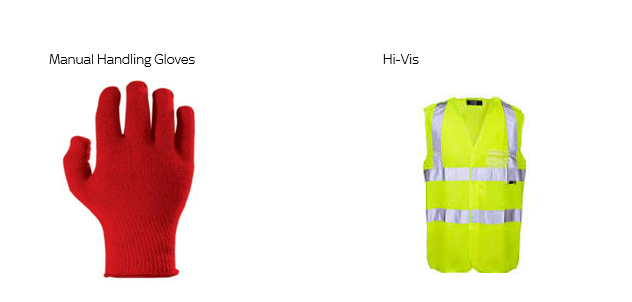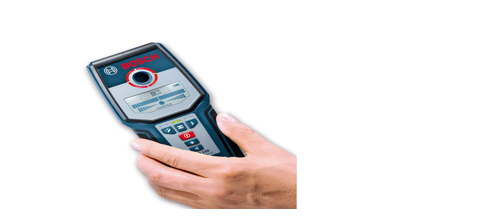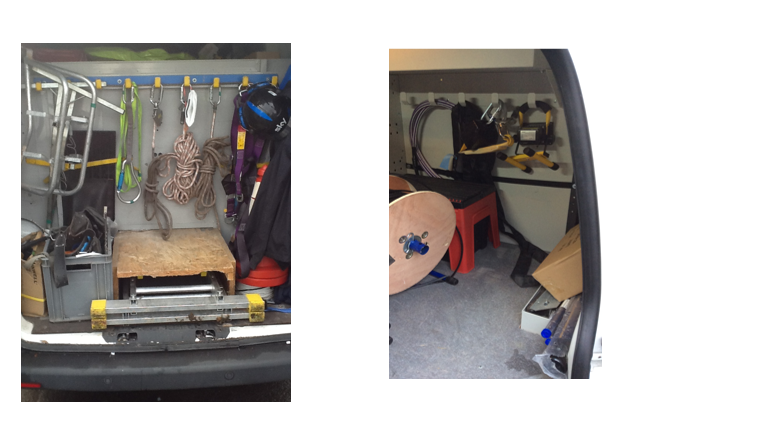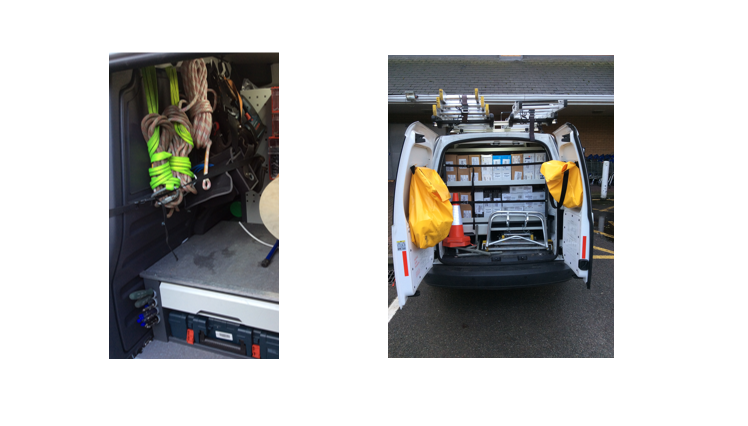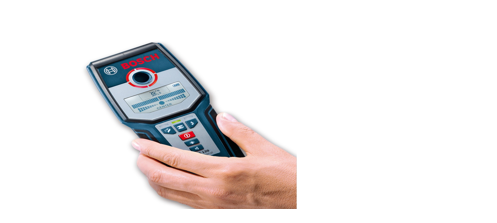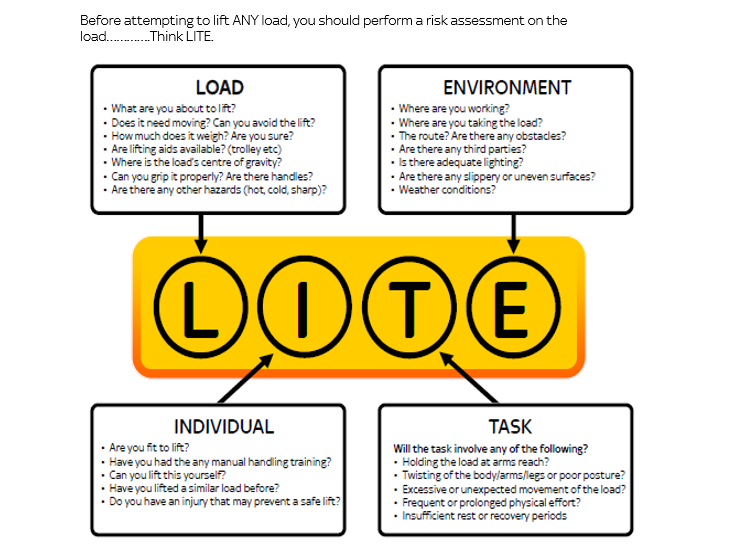Information
Tool box Talk
-
Engineer details (**payroll number must be included**)
-
Prepared by
-
Conducted on
-
- PPE
- Dropping items from height
- Critical Hit
- Near Miss/Accident Reporting February 2016
- Equipment Storage
- Correct Drilling Procedures
- Damage Awareness and Critical Hit guidelines
- Risk Assessment and Hazard Awareness
- Manual Handling
Tool Box
All Tool box talks are to be stored in your team safety folder
-
Please select your required tool box talk
- PPE
- Dropping items from height
- Critical Hit
- Near Miss/Accident Reporting February 2016
- Equipment Storage
- Correct Drilling Procedures
- Damage Awareness and Critical Hit guidelines
- Risk Assessment and Hazard Awareness
- Manual Handling
PPE Tool Box Talk
-
PPE is the last line of defence with regard to risk control and accident prevention.
PPE is designed to be worn to reduce the risk of injury where there is no other practical way of doing so.
PPE quite often performs simple but important tasks such as protecting the hands from sharp objects, the feet from items being dropped on them or in the case of Hi-Vis vests making you more visible to the public.
A Hi-Vis Vest MUST be worn when working on or near a road or in poor light conditions
The PPE at Work Regulations are made under the Health and Safety at Work act.
They require Sky to provide PPE wherever there is a risk to an individual’s health and safety that cannot be adequately controlled in other ways.
PPE must also be:
• Properly assessed before use
• Provided with instructions in its safe use
• Maintained and stored properly
• Used correctly by employees
Your duties are to ensure that all PPE issued to you is used for its intended purpose whenever it is needed.
PPE should be looked after and kept in good condition, checks should be made prior to use and at the end of each working day.
If ANY piece of PPE is found to be defective in ANY way then a replacement should be obtained before work can continue.
All PPE is made available to you free of charge & MUST be used when required.
You should use company approved PPE ONLY - DO NOT use your own PPE items as these may not provide the same level of protection as the standard items
PPE Supplied The correct use and routine daily checks for PPE can be found in your safety manual from page 7.
Knowledge check questions
-
1. Who is responsible for checking and maintaining your PPE?
-
2. What is the main reason for wearing your manual handling gloves?
-
3. Who is responsible for providing you with PPE?
Please sign the appropriate statement.
-
Date and Time
-
I have read and understood this tool box talk and I understand my responsibilities. I am aware that failure to comply with the risk Assessment process could result in disciplinary action being taken.
-
I have read and do not fully understand this tool box talk and i need further refresher training.
Dropping items from height Tool Box Talk
-
As part of your daily activities, it is your responsibility to ensure that there is a safe zone whilst working at height.
As part of your risk assessment you should identify any third parties which may become hazards.
People and animals can be hazards, they may not do anything dangerous but they can get in the way, move or interfere with equipment or distract you whilst working. (H&S manual page 29)
WORK SAFELY -An object falling (even from a low height) can have serious if not fatal consequences. In our working areas we have a lot of material, equipment and tools being used or placed at height, which pose a significant risk to anyone passing or working below. The primary objective is to proactively stop the drop!
STOP the DROP!
-
Wherever there is work at height, engineers must plan the work and identify risk controls to prevent dropped objects.
Ask third parties to remain clear of your potential drop zone.
Use your tool belt or tool vest to safely store hand tools whilst working, only take equipment up the ladder you require and avoid overloading yourself. Take your time when replacing your tools in you tool belt/vest to minimize drops.
Trouser pockets are not to be used for the storage of tools and equipment but can be used for consumables (IE clips, F connectors etc)
Knowledge checks questions:
-
Where must you keep your hand tools when working from a ladder?
-
How should you dispose of the old dish or LNB whilst working from a ladder?
-
Name three things that you could do to make your working area safe?
Please sign the appropriate statement.
-
Date and Time
-
I have read and understood this tool box talk and I understand my responsibilities. I am aware that failure to comply with the risk Assessment process could result in disciplinary action being taken.
-
I have read and do not fully understand this tool box talk and i need further refresher training.
Critical Hit Tool Box Talk
-
Before any drilling commences, it goes without saying that all reasonable precautions should be taken, follow pages 33 to 36 of the Health and Safety manual for further guidance.
1. Always use your Bosch detector
2. Check both sides of the wall
3. Look for existing sockets, pipes and cables
4. Ask the customer if they are aware of any hidden services -
-
However, if after all precautions have been followed you have a critical hit, this is the process you should follow.
1. Check that you are not personally injured and anyone else.
2. Ask customer to isolate the gas/electric/water.
3. Contact field escalation team on 07787268917
4. Escalate to TM
If the working area has been made safe and the customer is in agreement you may continue with the visit, however if there is any doubt over safety then you must discuss this with your TM before continuing with any work.
Knowledge check questions:
-
Name 2 precautions you should take before drilling?
-
What number should you ring to report the hit?
Please sign the appropriate statement.
-
Date and Time
-
I have read and understood this tool box talk and I understand my responsibilities. I am aware that failure to comply with the risk Assessment process could result in disciplinary action being taken.
-
I have read and do not fully understand this tool box talk and i need further refresher training.
Near Miss/Accident Reporting February 2016 Tool Box Talk
-
An important part of your daily working day is identifying hazards which have the potential to cause harm.
It is your responsibility to carry out a risk assessment that allows the correct control measures to be put into place.
Even after all the measures are put in place you could still have a NEAR MISS or ACCIDENT
And what you do about these are very important.
You have a duty as an employee to report ALL NEAR MISS or ACCIDENTS to your duty
Manager. The incident can then be investigated to try and determine if anything could
Have been done to prevent it from happening at all.
This process can be a useful tool in developing and improving the safe working practice
Currently in use.
Whilst it is impossible to eliminate every single risk from the workplace, it is important that
You understand the types of accidents that can happen and the steps you can take to try
And prevent them from occurring.
Near Misses
Sometimes an incident occurs that does not cause injury or damage but could very easily
Have done so if the circumstances were different in any way.
DEFINITION OF A NEAR MISS
-
An unplanned event that did not result in injury, illness or damage. But had the potential to do so.
An Engineer in the South region recently experienced a near miss:
Luke was using a partially extended triple ladder and missed his footing seven rungs from
The ground and fell off. Thankfully Luke’s safety equipment engaged and he was able to self
Rescue. Although he hit the wall as he fell, Luke was completely unharmed.
This near miss could very easily have turned into an accident if Luke was not using his
Equipment properly. It also proved that the safe working practices that have been
Developed by Sky to ensure that working from ladders is as safe as
Possible were sufficient and fit for use.
If you have a near miss please report on your I Pad and contact the duty manager.
If you have completed the visit and you have a near miss contact the duty manager and provide all the relevant details.
DEFINITION OF AN ACCIDENT
-
ANY UNPLANNED EVENT THAT RESULTS IN INJURY OR ILL HEALTH TO PEOPLE OR DAMAGES EQUIPMENT, PROPERTY BUT WHERE THERE WAS A RISK OF HARM.
Any accident must be reported AS SOON AS YOU POSSIBLE CAN to the duty manager who will start an investigation after first determine the severity of the injury.
Hazard Awareness Procedure
To help minimize near misses and accidents you complete dynamic risk assessments to help.
We also have generic risk assessments which can be obtained from your duty manager.
An important aspect of the Health and Safety procedure is the empowerment given to you to determine what H&S equipment to use in addition to the minimum requirements. On every installation or service call, the full hazard awareness procedure (i.e., a Risk Assessment) must be carried out in order to identify any hazards that are present. This is completed on your I Pad (paper form if I Pad is not available) and is a vital part of your role. This must be completed before any on-site activity is started.
• You must determine what hazards are present when parking or working internally/externally on every occasion.
• Wherever possible, hazards must be removed.
• If a hazard cannot be removed, then it must be adequately controlled.
• If hazard cannot be removed or controlled it must be escalated to your manager.
• You must ensure at all times that you are working in the safest manner possible considering the hazards that are present.
Knowledge checks questions:
-
What must be completed before you start any work?
-
After filling in I Pad to report a near miss what should you do next
Please sign the appropriate statement.
-
Date and Time
-
I have read and understood this tool box talk and I understand my responsibilities. I am aware that failure to comply with the risk Assessment process could result in disciplinary action being taken.
-
I have read and do not fully understand this tool box talk and i need further refresher training.
Equipment Storage Tool Box Talk
-
You are all supplied with vans with specifically designed racking to store your health and safety equipment safely. This is to ensure that the equipment is looked after in the optimum way ensuring no damage is caused, it also ensures that the equipment is correctly stowed which reduces the movement and potential damage whilst in transit.
Your ropes are a key part of your safety equipment and by stowing them correctly by hanging them up in the correct manner you ensure they dry effectively which will maximize the lifespan of these ropes.
Below are some pictures of both transporter layout and caddy layouts in how your equipment should be stored. -
-
Knowledge check questions:
-
Why should your ropes be hung up?
-
How should you secure your cable reels?
-
What should you do with wet equipment?
Please sign the appropriate statement.
-
Date and Time
-
I have read and understood this tool box talk and I understand my responsibilities. I am aware that failure to comply with the risk Assessment process could result in disciplinary action being taken.
-
I have read and do not fully understand this tool box talk and i need further refresher training.
Correct Drilling Procedures Tool Box Talk
-
Before any drilling commences, it goes without saying that all reasonable precautions should be taken, follow pages 33 to 36 of the Health and Safety manual (Version 2.4) for further guidance.
1. Always use your Bosch detector
2. Check both sides of the wall
3. Look for existing sockets, pipes and cables
4. Ask the customer if they are aware of any hidden services -
-
You should only need to drill external holes when installing an eye bolt and also a dish bracket or swan neck.
Generally walls that have been rendered will need more care when drilling external holes then if you’re drilling a hole into a brick although still carry out checks if required.
For rendered walls if you suspect a cable may be present in the area close to the site use the Bosch Cable & Pipe detector to check the area.
At no time should you be drilling through external walls to internal rooms to install cables.
You have more hazards on internal walls such as power sockets and radiator’s which you cannot clearly identify from outside. You will also have customer’s furniture which you could hit as well as the damage you are likely to inflict on the internal wall as you drill through.
You have not been trained to carry out this task so at no point should you be drilling externally to internally if in doubt escalate to your team manager.
Please sign the appropriate statement.
-
Date and Time
-
I have read and understood this tool box talk and I understand my responsibilities. I am aware that failure to comply with the risk Assessment process could result in disciplinary action being taken.
-
I have read and do not fully understand this tool box talk and i need further refresher training.
Damage Awareness and Critical Hit guidelines Tool Box Talk
-
The following guidelines have been put in place to support our customers and yourself. During our working day we may come across situations whereby actions we take could result in unnecessary damage and critical hits.
Through our investigations that have taken place it has been found that if you follow these guidelines we are laying out below will significantly reduce damage, critical hits and injury during your daily activities.
1) Risk Assessment
• Carry out a thorough risk assessment before starting any activity onsite, please refer to health and safety manual (pages 25-33)
2) Safe Drilling Practices
• Carry out visual inspection inside and out of drilling location before starting
• At all times use your stud detector is to be used to ensure location is safe to drill (Health and safety manual pages 33-38)
• Usage of dust pan or reasonable precautions are to be taken to reduce dust/dirt on customers flooring (page 48)
• All relevant PPE for drilling must be used (Health and safety manual pages 7-10)
• Follow safe drilling practices as set out in Health safety manual (pages 43-48)
• all cable entry and eyebolt holes are sealed
• Sealing holes
3) Handling equipment and customers personal possessions
• Always take care when moving equipment around customer premises, if possible use external access in the first instance
• Ask customer to move own possessions, if help is required then assist taking care at all times
• Ensure manual handling guidelines are followed at all times (page 49-56)
4) Cleanliness
• All uniform is to be at a good standard of cleanliness and serviceable
• Overshoes to be worn at all times inside customers property, care should be taken at all times when overshoes are worn
• Working area must be left clean and tidy once all works are complete (page 48)
• All old equipment must be removed from customers property and returned through standard stock return process
• Once work is complete carry out inspection with customer and explain and clarify works completed
Please sign the appropriate statement.
-
Date and Time
-
I have read and understood this tool box talk and I understand my responsibilities. I am aware that failure to comply with the risk Assessment process could result in disciplinary action being taken.
-
I have read and do not fully understand this tool box talk and i need further refresher training.
Risk Assessment and Hazard Awareness Tool Box Talk
-
An important part of your daily work is a formal risk assessment. Comprehensive training for Risk Assessment on-site was given in training. If you require any more information on Risk Assessment it can be found in the training manual .PAGES 25 to 33
It is your responsibility to ensure that you do not expose yourself or others to unnecessary hazards whilst at work.
To do this we must perform a Risk Assessment before we start ANY work.
Carrying out a risk assessment allows the correct control measures to be put into place.
Definitions within Risk Assessment:
HAZARD: A Hazard is something with the potential to cause harm, even if it is not presently doing so.
HARM: Harm is the physical injury or ill health or damage suffered by those exposed to a hazard.
RISK: Risk is the likelihood that the harm from a particular hazard is realised and how much harm occurs.
RISK = LIKELIHOOD X SEVERITY
The basic approach to the assessment of risks can be summed up in the following steps.
Stages of Risk Assessment:
-
1. Identify The hazards involved
2. Decide Who may be harmed and how
3. Evaluate The risks and decide on the controls needed
4. Record Your findings and implement them
5. Review Your assessment and update if necessary
Types of Hazard
-
Wherever possible hazards must be removed rather than controlled.
The following category is a list of hazards likely to be encountered but the list is not exhaustive -
• Adverse Weather.
• Third Parties.
• Traffic.
• Existing External Equipment.
• Property Hazards
• Garden Hazards.
• Ground Hazards.
• Other Hazards.
N.B. For a more detailed breakdown of these Hazard Categories, please refer to The Risk Assessment Module in your Safety Manual.
Hazard Awareness Procedure and Form
An important aspect of the Health and Safety procedure is the empowerment given to you to determine what H&S equipment to use in addition to the minimum requirements. On every installation or service call, the full hazard awareness procedure (i.e., a Risk Assessment) must be carried out in order to identify any hazards that are present. This is completed on your I Pad (paper form if I Pad is not available) and is a vital part of your role. This must be completed before any on-site activity is started.
• You must determine what hazards are present when parking or working internally/externally on every occasion.
• Wherever possible, hazards must be removed.
• If a hazard cannot be removed, then it must be adequately controlled.
If hazard cannot be removed or controlled it must be escalated to your manager.
You must ensure at all times that you are working in the safest manner possible considering the hazards that are present.
Consider all tasks and situations and explain what you would do in these scenarios How would you control remove the risk
-
You arrive at the customer’s door and as he opens the door a dog appears he is not aggressive but is a little boisterous.
-
You complete risk assessment and have stated that dish will go low level with no ladder work needed but after trying to get signal it becomes clear that dish needs to be put on the chimney.
-
While you are doing your risk assessment you come across damp decking
Please sign the appropriate statement.
-
Date and Time
-
I have read and understood this tool box talk and I understand my responsibilities. I am aware that failure to comply with the risk Assessment process could result in disciplinary action being taken.
-
I have read and do not fully understand this tool box talk and i need further refresher training.
Manual Handling Tool Box Talk
-
Manual Handling includes the Lifting, Lowering, Push-ing, Pulling, Turning, Transporting and Throwing of ANY load.
Manual Handling Operations Regulations are made under the Health & Safety at Work Act and are in place to try and reduce the amount of accidents caused by manual handling activities.
Manual Handling accidents account for approximately 20% of all accidents reported by Installation Engineers.
Some common injuries are:
• Bruises
• Sprains
• Muscle Strain
• Back Ache
• Arm and Shoulder Pain
It is YOUR responsibility to carry out a Risk Assessment before attempting to move ANY load to prevent potential injuries. -
-
All manual handling activities should be carried out as smoothly as possible; this will help to reduce the strain on your body. Wherever possible, face in the direction you need to move and perform the lifting and moving as one smooth movement. If you need to turn then move your feet rather than rotate your body. This will help prevent back injuries.
In the event of an injury you should escalate immediately to your duty TM and seek medical advice if required.
THINK LITE
Knowledge check questions:
-
Name 2 common injuries from poor manual handling?
-
What should you do before attempting to move any load?
Please sign the appropriate statement.
-
Date and Time
-
I have read and understood this tool box talk and I understand my responsibilities. I am aware that failure to comply with the risk Assessment process could result in disciplinary action being taken.
-
I have read and do not fully understand this tool box talk and i need further refresher training.







